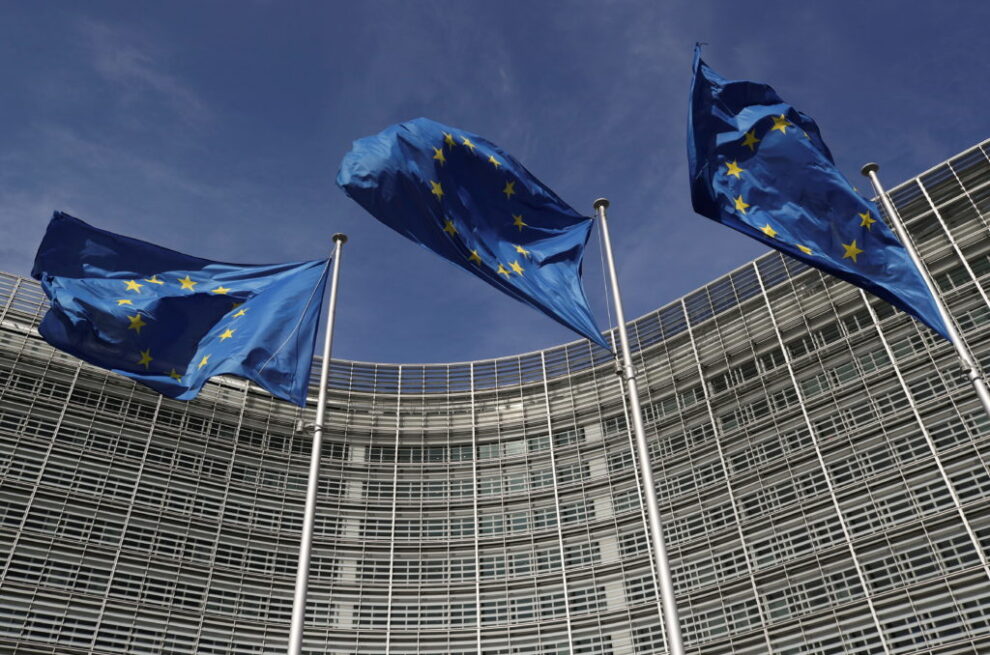With the EU’s first climate targets likely to be missed, the European Commission must be more proactive in pushing EU member states to abide by the rules – because if it doesn’t, then who else will?
The EU is a self-proclaimed climate champion. The European Green Deal, launched almost four years ago, was branded as the Union’s new growth strategy, with the final objective of cutting greenhouse gas emissions to net-zero by 2050.
But neither electric vehicles or heat pumps, however important they may be, will see net-zero done on their own. The whole undertaking hinges on three “keystone” climate laws, which define the broader framework in which EU climate action takes place.
These are the emissions trading scheme (the ETS, which caps emissions from heavy industry), the ETSII covering transport and buildings, and the Effort Sharing Regulation (ESR) that covers emissions from the remaining sectors of the economy.
The first to keep in mind is the effort-sharing framework, explains Jakob Graichen, an expert on the topic who works for the German Öko-Institute.
“Member states have to offset their emissions that exceed the Effort Sharing Regulation every year,” Graichen explains. Richer countries have stricter targets: up to 50% reduction on covered sectors compared to 2005. Covered sectors include agriculture buildings, and transport – all notoriously difficult to decarbonise.
However, progress by EU countries is reviewed only every five years, with the next review scheduled in 2027, Graichen says.
Under the ESR regulation, countries such as Italy, Austria and Ireland – which are already failing to meet their obligations – would then have to purchase emission allowances from other, greener EU member states.
However, since these countries’ surplus allowances are valid until 2030, some countries may be incentivised to keep their 2025 surplus in reserve.
“It could be that countries such as Germany, whose achievement of the 2030 targets is very doubtful, are not prepared to surrender them,” notes Graichen.
And therein the first cliff-edge looms for this keystone in 2027: The European Commission will find that countries like Italy have failed their targets.
These countries should then scramble to buy certificates from those who did better.
In the past, certificates were abundant and traded for €1 each. Going forward, prices are expected to soar amid a demand squeeze. Fewer countries will overachieve their ESR targets, while more countries will be legally obliged to purchase certificates.
Things will get worse quickly. In late October, the European Environmental Agency released a damning projection: By 2030, emissions are on track to overshoot effort-sharing targets by more than 560 million tonnes of CO2. That’s almost double the annual emissions of France today.https://e.infogram.com/180d5123-eeff-4dab-891d-6da2d257da71?parent_url=https%3A%2F%2Fwww.euractiv.com%2Fsection%2Fenergy-environment%2Fnews%2Feuropes-climate-laws-need-a-guardian-angel%2F&src=embed#async_embed
And in the middle of all that? The European Commission, aptly termed the “guardian of the treaties”, whose bureaucrats tower over Brussels in their Berlaymont headquarters and are tasked with defending EU law in all its permutations.
To do their task,EU officials have been given tools, like the ability to speak out and take EU countries to task with sanctions.
Most will know the infamous infringement procedure, where Brussels sends early warning letters to EU countries before eventually taking them to court if they persist in violating the law. It’s a lengthy, drawn-out process, that usually takes years to bear fruit.
Assuming the ESR targets are missed, the first few cases could be launcehd in 2027, targeting countries like Italy, but this is far from certain.
“This depends on whether the EU Commission is prepared to defend the Climate Protection Act and the Climate Protection Regulation in court if necessary,” said Graichen.
Five years down the line, in 2030, things could get rather fraught. “In 2032, the Commission would have to initiate infringement proceedings against almost twenty member states,” Graichen added.
That would be a worst-case scenario, of course. Either the Commission will take all of Europe to court, or the bloc’s commitment to climate action will be called into question.
What can and should be done to prevent this? Maybe the Berlaymont could learn from its “neighbours.”
Much like the military alliance NATO, which is also headquartered in Brussels, the Commission must adopt a doctrine of deterrence by enhanced forward presence, looming over EU countries to intimidate them into meeting climate targets.
The Commission is treading a fine line. On the one hand, it must keep EU countries in line, which would speak in favour of launching infringement proceedings without delay. But on the other, the EU executive also wants to avoid burning all its political capital at once.
Currently, it is resorting to a soft touch, as illustrated by this sentence quietly tucked away in the Commission’s annual climate action report: “Member states are encouraged to reflect on additional measures to reduce their emissions under the ESR, in particular as part of the ongoing NECP [National Energy and Climate Plan] update process.”
Perhaps EU officials are being more insistent behind the scenes. But they should be shouting it from the rooftops. Much like NATO is enhancing its presence in the Baltics, the Berlaymont should begin marshalling its “troops” – bureaucrats and lawyers.
Unlike its fellow keystone laws, the effort-sharing rules offer a perfectly suitable low-impact avenue of showing EU countries that the Commission means business: Article 8.
The Berlaymont can demand that EU countries submit a “corrective action plan” where, for example, Rome must demonstrate how it will meet its ESR obligations – a first step that can be taken when all climate plans are finally submitted.
“I think the Commission has to build up a bit of credibility that it will bring proceedings if the member states do not meet their climate targets, like that of the Effort Sharing Regulation,” explains Klaus Röhrig from Climate Action Network Europe.
Otherwise, the situation could end up being similar to the EU’s Schengen borderless area – where Brussels continues to be reluctant to defend EU law by taking countries to court.
“In the past, the Commission has taken this step far too rarely. In other words, it has usually stuck to its soft law corner,” adds Röhrig – like with countries submitting climate plans late.
The guardians of the treaties may have to become more proactive by becoming their guardian angel. Act now, or watch on as one keystone law after another crumbles. Because it won’t be long before ETS II is similarly besieged.
Source : Euractive











